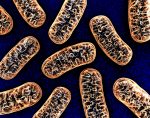Plans Advancing for Trial of Elamipretide in Aiding Cardiac Muscle in DMD

A branch of the U.S. Food and Drug Administration (FDA) known as the Division of Cardiology and Nephrology has given positive feedback to Stealth BioTherapeutics‘ program for Duchenne muscular dystrophy (DMD).
In a pre-investigational new drug (pre-IND) meeting, the division — called the DCN — agreed to the design of a proposed clinical trial assessing elamipretide, which aims to increase the activity of mitochondria and treat cardiac muscle disease in Duchenne. Mitochondria are the cell structures responsible for producing cellular energy.
The DCN also agreed that progression of cardiac muscle scarring — a condition called myocardial fibrosis — as assessed by MRI could be the trial’s main goal (endpoint).
“We applaud DCN for recognizing the importance of assessing myocardial fibrosis in DMD, where progressive fibro-fatty infiltration starting as early as middle childhood is associated with a loss of left ventricular function and adverse cardiovascular events,” Reenie McCarthy, CEO of Stealth, the therapy’s developer, said in a press release. “This progressive cardiomyopathy [heart muscle disease] can lead to heart failure, which is the leading cause of early mortality in DMD, and remains an important unmet need.”
Stealth and the FDA office are continuing discussions related to the proposed elamipretide trial, which the company hopes to formerly file a request to launch by June, with the possibility of initiating the clinical study by December 2022. These plans could change depending on further regulatory feedback and financing.
“We look forward to continued dialogue with DCN regarding a proposed approval pathway on the basis of this surrogate endpoint, which will include ascertaining elamipretide’s effect on this biomarker in our proposed clinical trial and designing an appropriate postmarketing confirmatory study,” McCarthy added.
In the pre-IND meeting, the DCN also outlined steps that might reasonably support evidence of a slower progression in cardiac scarring being of clinical benefit to Duchenne patients. Such a link would be a necessary for accelerated approval in a trial with progressive cardiomyopathy as a main goal, the company reported.
“End-stage heart failure is the main cause of death in DMD, so that even as we applaud the introduction of new therapies and treatment modalities to address other aspects of the disease, we have been asking ourselves: Is the DMD heart ‘built to last’?,” said Pat Furlong, founding president and CEO of Parent Project Muscular Dystrophy.
“We appreciate the FDA’s willingness to listen to the voice of the DMD community by outlining novel pathways to speed the development of therapies … and we are pleased to welcome Stealth to the dedicated community of researchers, clinicians and industry who have partnered with us over the last 25+ years,” Furlong added.
Elamipretide is a peptide, a small chain of amino acids (the building blocks of proteins), designed to easily enter cells and bind to cardiolipin, a fatty substance found in mitochondrial membranes. Once bound to cardiolipin, elamipretide is thought to help stabilize the membranes’ structure, to boost the activity of mitochondria and cell energy.
Stealth recently reported preclinical data in a mouse model of X-linked muscular dystrophy, showing that elamipretide as an add-on to an exon-skipping therapy boosted dystrophin levels in muscle cells by nearly twice that of the exon-skipping therapy alone.
The increase activity likely is due to better mitochondrial function, which allows the exon-skipping therapy to be retained in cells for longer and be more effective, the company reported.
Of note, disease in mouse models of X-linked muscular dystrophy is caused by mutations on the sex-determining X-chromosome (females have two X chromosomes, and males one X and one Y). Duchenne is caused by mutations in the X-linked gene DMD, which codes for dystrophin. Exon-skipping therapies work by prompting cells to “skip over” the mutated section of DNA when a gene is “read” to produce a protein, generating a shortened but working version of dystrophin.
Mitochondria have specifically shaped membranes that harbor specialized proteins to generate through the conversion of food a cell’s “energy currency,” called adenosine triphosphate or ATP.







